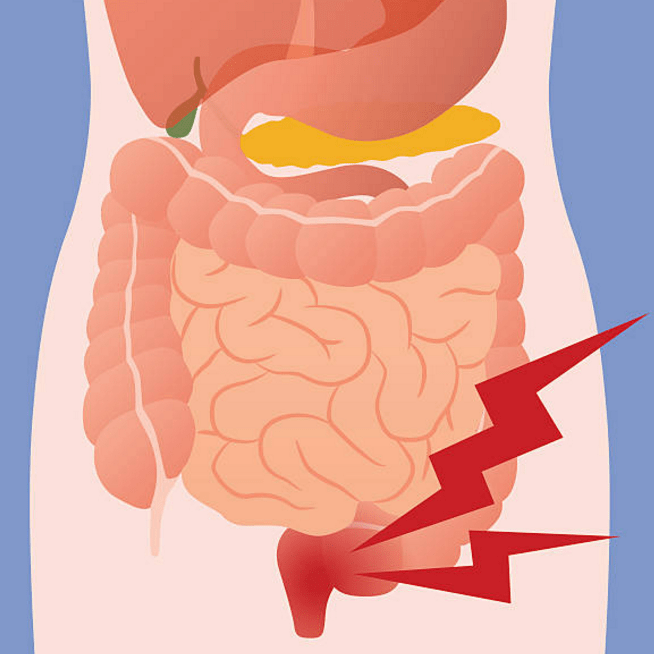The term haemorrhoids refers to a condition in which the veins around the anus or lower rectum are swollen and inflamed and bulge out into the anal canal. Haemorrhoids can be internal (inside the anus) or external (on the skin around the anus). Haemorrhoids may result from the straining that is associated with passing a stool when the stools are hard but other contributing factors include pregnancy, ageing, chronic constipation and anal intercourse.
Haemorrhoids are not usually dangerous or life-threatening.
Symptoms
Although many people have haemorrhoids, not all experience symptoms and in most cases, haemorrhoid symptoms disappear within a few days. The most common symptom of internal haemorrhoids is bright red blood covering the stool, on the toilet paper or in the toilet bowl. However, an internal haemorrhoid may protrude through the anus outside the body, becoming irritated and painful. This is known as a protruding haemorrhoid.
Symptoms of external haemorrhoids may include a painful swelling or hard lump around the anus that results when a blood clot forms. This condition is known as a thrombosed external haemorrhoid. Excessive straining, rubbing, or cleaning around the anus may irritate the haemorrhoid leading to bleeding and /or itching, which may produce a vicious onset of symptoms. Draining mucous may also cause itching.
Many anorectal problems including fissures, fistulae, abscesses, irritation or itching (pruritus ani), may be incorrectly referred to as haemorrhoids as they share similar symptoms.
Diagnosis
A thorough evaluation and proper diagnosis by the doctor is important any time there is bleeding from the rectum or blood in the stool as bleeding may be a symptom of other serious digestive diseases, including colorectal cancer.
Closer evaluation of haemorrhoids inside the rectum requires examination with an endoscope, (a hollow, lighted tube), useful for viewing internal haemorrhoids, the rectum and lower colon (sigmoidoscopy), or the entire colon (colonoscopy). A proctoscope, is also valuable for obtaining a more complete examination of the anal canal.
Treatment
Medical treatment of haemorrhoids is initially aimed at relieving symptoms. Measures may include:
- Warm tub baths several times a day in plain, warm water for about 10 minutes.
- Application of a haemorrhoidal cream or suppository to the affected area for a limited time.
- Increasing fibre and fluids in the diet to relieve the pressure and strain.
Eating the right amount of fibre and drinking six to eight glasses of fluid (not alcohol) may result in softer, bulkier stools. A softer stool makes emptying the bowels easier and lessens the pressure on haemorrhoids caused by straining. Eliminating straining also helps prevent the haemorrhoids from protruding.
Good sources of fibre are fruits, vegetables and whole grains. Dietary intake may be augmented with fibre supplements, stool bulking agents and softeners.
In some cases, haemorrhoids must be treated endoscopically or surgically with the procedure performed by the doctor during an office or hospital visit. These methods are used to shrink and destroy the hemorrhoidal tissue and may include:
- Rubber Band Ligation: A rubber band is placed around the base of the haemorrhoid inside the rectum, cutting off the circulation and the haemorrhoid withers away within a few days.
- Sclerotherapy: A chemical solution is injected around the blood vessel to shrink the haemorrhoid.
- Infrared Coagulation: A special device is used to burn hemorrhoidal tissue.
- Hemorrhoidectomy: Occasionally, extensive or severe internal or external haemorrhoids may require removal by surgery known as hemorrhoidectomy.
The best treatment, however, is prevention. Prevention strategies such as regular exercise, never delaying or resisting the urge to empty your bowels, increasing dietary fibre and fluids all help to keep stools soft and easy to pass, decreasing pressure and straining and reducing the likelihood of constipation and haemorrhoids.

